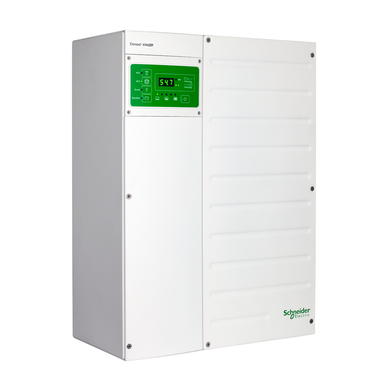I'm talking about the new one on signature solar. It seems like a very nice inverter, hybrid, and has are really long surge profile.

 signaturesolar.com
signaturesolar.com
Still though it is only 6.8 kw and doesn't have a charge controller. What does it have that makes it a better purchase compared to something like this: https://signaturesolar.com/growatt-240v-3kw-grid-tie-inverter/
For $920 you could get two of those with 8400 watts of solar input, it has an mppt, the two will give you 6 kw output. It seems like more stuff in a smaller package for a third of the price. What's the deal?

Schneider Conext XW PRO 6.8KW Hybrid Inverter/Charger | 48V 120/240V
Signature Solar provides solar panels, off-grid solar systems, grid-tie, and hybrid systems. Quality solar inverters, bifacial solar panels, complete solar kits, solar batteries. Featuring brands such as EG4 Electronics with their solar battery, LifePower4 and EG4 LLifePower4 and EG4 LL
 signaturesolar.com
signaturesolar.com
Still though it is only 6.8 kw and doesn't have a charge controller. What does it have that makes it a better purchase compared to something like this: https://signaturesolar.com/growatt-240v-3kw-grid-tie-inverter/
For $920 you could get two of those with 8400 watts of solar input, it has an mppt, the two will give you 6 kw output. It seems like more stuff in a smaller package for a third of the price. What's the deal?


